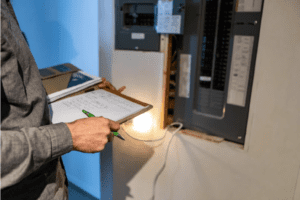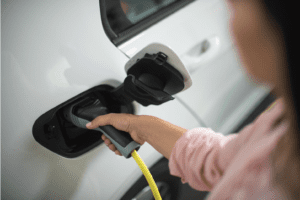Thinking of finally getting that electric vehicle?
You’re not alone. Electric vehicles (EVs) have exploded in popularity. Experts estimate that 52% of new vehicle sales will be electric by 2030.¹ The decision to purchase an electric vehicle is just the first step in the process: your garage and electrical system need to be ready, too. Electric cars require regular charging, especially in cold climates like Minnesota, and if you can’t charge it at home, it’ll be a major inconvenience.
We’ve put together a list of essential tips and tricks for potential EV owners . Once you get this covered, you’ve got a smooth road ahead.
Not all EV charging stations are the same!
A Tesla® has one type of charging station, but Toyota® has a different type. It’s essential to get the type of charging station that meets your car’s needs. If you’re switching the make of your electric vehicle you’ll most likely need a new charger.
Your outlet might not be compatible
Dedicated EV charging stations are designed to plug into an outlet in your garage – and it’s typically a 240 volt outlet. The problem? The typical outlets in your home and garage are only 120 volts. That means you’ll need to upgrade your outlet. Installing a 240 outlet and running the wire to your electrical panel is NOT a DIY project. A wire needs to be run from your electrical panel to the 240 outlet in the garage. Some homes have the electrical panel located in the garage. In many older homes, the electrical panel is in the basement… and running the wire from the garage outlet to the panel can be a challenge. Bonfe can help!

A detached garage can still work
Detached garage? Don’t panic. Wires from an electrical panel inside your home can be trenched (meaning buried in the ground) between the house and the garage. Alternatively, you may be able to have a separate service installed by your electric utility directly at the garage.
You may need to make changes to your electrical panel
Proximity to your electrical panel isn’t the whole story. It’s important to make sure you have room on your electrical panel for a 240 volt circuit that’s dedicated to your vehicle. If so, great! If not, you’ll need to upgrade your panel or install a subpanel. Either way, it’s something a license electrician can do safely and efficiently.
Check the amps that your car charger will draw
More power in your car charger sounds great, right? Not so fast. In most homes, the electrical utility can accommodate residential service size of between 100 and 200 amps. This works great for most car chargers. However, some high-speed car chargers may draw more enough additional power that you’ll need to increase the amp service to your home. A Bonfe electrician can help walk you through the options and plan for what you’ll need.

Overwhelmed? Don’t be. Bonfe electricians are trained in electric vehicle charger installation. They can evaluate your home’s panel, service level, and outlets, recommend options, and install what’s needed so that you’re ready to roll when you drive home your new electric car

